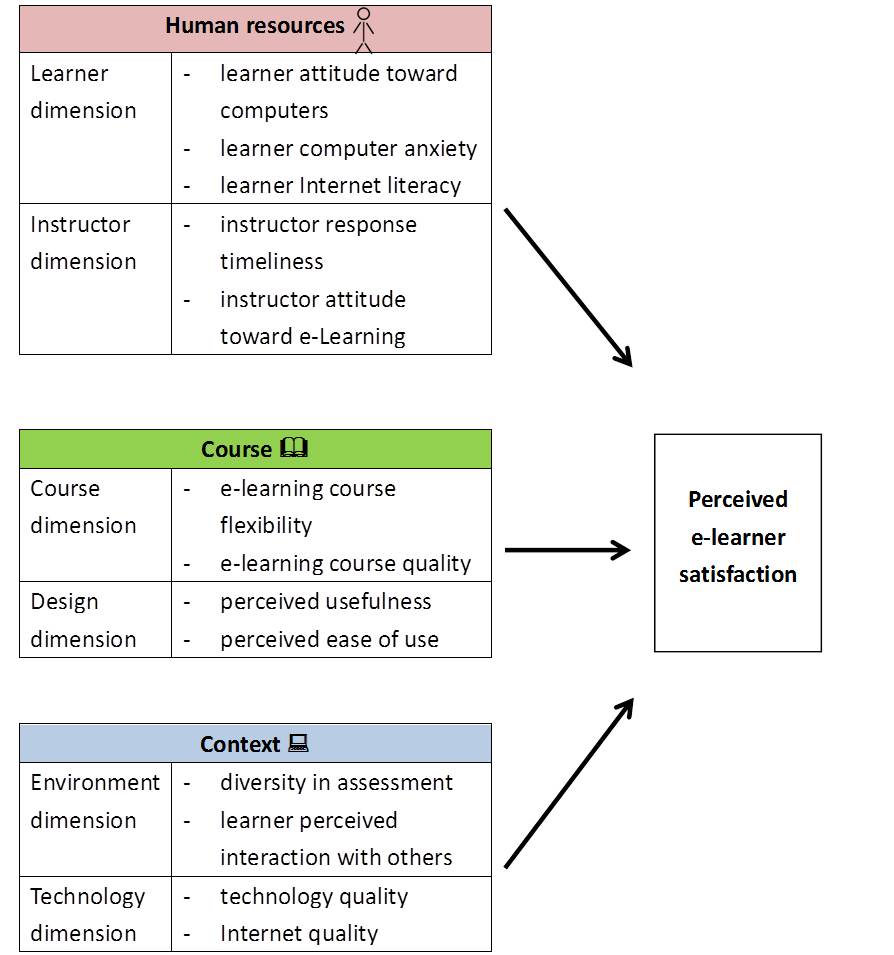> R & D Background
|
Literature Review |
| |
e-Learning: A novel educational paradigm |
e-Learning has been an emerging global trend in education for some years, as evidenced by a surge of research studies about its application in different parts of the world (e.g., Boulton, 2008; Long & Szabo, 2016; van Orden, 2006; Lin, 2014; Tay, 2016; Vungthong, Djonov & Torr, 2015; Lee & Lee, 2015; So, 2005, to name just a few). These listed research studies do not only highlight different concerns/issues in e-learning but also convey two important messages: (1) students and teachers are two core parties contributing to the success of e-learning, and (2) e-learning is not age-bound and can be conducted even among younger learners at the primary and secondary levels.
According to a UNESCO report (2014) on the integration of information and communication technology (ICT) in education in Asia in 2012, e-learning has been implemented at different degrees across all levels of education in Hong Kong. Ever since the release of the Consultation Papers and Consultancy Reports on the use of information technology (IT) by the Education Bureau in 1998 and subsequent publications (e.g., 2004 on strengthening the learning/teaching [L/T] process with IT, and 2009 on textbooks and the development of accompanying e-learning resources), many discussions and initiatives in the use of IT and e-learning in education have been stimulated. The potential value and significant role of e-learning are further upheld and reinforced in the latest Basic Education Curriculum Guide on Primary Education (Education Bureau, 2014) |
| |
‘E-learning can make learning more effective, efficient and enjoyable as well as cater for learners with different needs and styles. E-learning does not replace the traditional mode of learning. Rather they complement each other. The key to success lies in making use of the advantages of the electronic media in the design and planning of learning in a suitable learning environment.’ (with words highlighted in boldface) |
As the above quote explains, e-learning can be integrated with traditional learning in an effective and fun manner. To ensure smooth and successful integration of e-learning into the traditional mode of learning, meticulous planning, design and use of different e-activities in the curriculum are deemed necessary.
|
| |
Why e-learning |
As explained in the research (e.g. Krämer and Schmidt (2001), reviewed in Pachler & Daly (2011)) and the documents published by Education Bureau (2004, 2009), IT is likely to possess a number of potentials, for example:
|
| 1. |
Setting up of a dynamic and interactive learning environment for collaboration among ‘schools, parents and the community’; |
| 2. |
Connection of the learners with the world; |
| 3. |
Flexibility in the learning process, which can take place anytime and anywhere, thereby enhancing collaboration among learners; |
| 4. |
Possible extension of the learning process outside the classroom, depending on the leaners - ability, progress and interest; |
| 5. |
Enrichment of the L/T process with simulation. |
| |
The above list helps highlight the value of e-learning in the L/T process, and to realise the above potentials, we need to understand the factors which foster the success of e-learning |
| |
Factors affecting successful e-learning |
In planning and designing viable e-learning activities and resources, it is vital to consider the factors affecting efficacious integration, implementation and management of e-learning in the traditional learning process. Sun, Tsai, Finger, Chen and Yeh (2008) propose six dimensions which are crucial to ‘perceived e-Learner satisfaction’¾learner, instructor, course, technology, design, and environment.
There are different related factors under each of the six dimensions which determine learner satisfaction in the e-learning process. Interestingly, these six dimensions can arguably be grouped into three facets of e-planning: human resources (learner and instructor), course (course and design), and contextual hardware (environment and technology). In other words, in planning our e-classes, we can start by reviewing these three facets, which comprise six dimensions and their related factors based on Sun et al.’s (2008) framework (Fig. 1):
|

Fig. 1 Three facets of Sun et al.’s (2008) dimensions of
perceived e-learner satisfaction
|
By studying the above facets, dimensions and their related factors, we can understand what aspects of e-learning our learners are satisfied with and worried about in our L/T context, thus rendering ourselves more confident in engaging the learners in the L/T process more effectively and planning e-learning in a holistic manner. As we shall see, these three facets-human resources, course and context were considered at different stages of planning and implementing the e-writing trials.
|
School context |
With increasing awareness of the potential contribution of e-learning to traditional L/T mode, more schools and teachers have been jumping on the bandwagon and Buddhist Chi King Primary School is one of them. e-Learning has been explored in different forms at Chi King for some years (e.g. Google Classroom and flipped classroom), and there has been extensive use of iPads and e-platforms in subjects such as General Studies and Mathematics. In 2015/16, P3 English was the target of experimenting e-learning, and two P3 Bring-your-own-device (BYOD) classes were involved in the present study.
As observed by the English teachers of the two P3 BYOD classes, the students in the two classes were rather weak in brainstorming and organising ideas for a writing topic. Therefore, the teachers intended to explore how to improve the students’ ability to generate more ideas and to place them in appropriate paragraphs through the infusion of a number of e-learning activities in the writing lesson.
|
|
|
Copyright © 2022 Language Learning Support Section, Education Bureau. All rights reserved.
|
|

